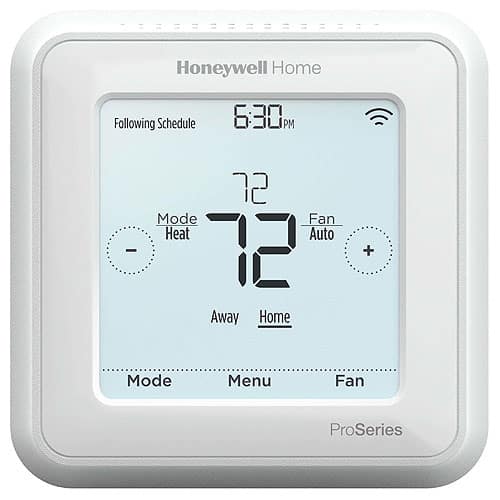A Guide To Thermostats
A thermostat is a small but powerful device that plays a crucial role in regulating indoor temperatures.
Whether you have a traditional or a smart thermostat, understanding its lifespan, installation process, connectivity with other devices, and overall cost can help you make an informed decision when purchasing or replacing one.

How Long Do Thermostats Last?
The lifespan of a thermostat largely depends on its type and usage. Here’s a general estimate for different types of thermostats:
- Manual Thermostats: 10-20 years
- Programmable Thermostats: 10-15 years
- Smart Thermostats: 7-12 years (due to technological advancements and software updates)
Factors that can affect a thermostat’s longevity include dust buildup, electrical issues, and frequent manual adjustments. If your thermostat is not responding properly, showing incorrect temperature readings, or causing frequent HVAC cycling, it may be time for a replacement.
Installation: DIY or Professional?
Installing a thermostat can range from a simple DIY project to a complex procedure requiring professional assistance.
DIY Installation
If you’re replacing an old thermostat with a similar model, the process is usually straightforward. Here’s a step-by-step guide for a basic installation:
- Turn off Power: Shut off the HVAC system at the circuit breaker.
- Remove the Old Thermostat: Carefully unscrew it from the wall and take note of the wiring.
- Label the Wires: Use labels or take a picture to ensure proper reconnection.
- Install the New Thermostat Base: Mount the base securely to the wall.
- Connect the Wires: Follow the manufacturer’s instructions to attach the wires to the correct terminals.
- Attach the Thermostat Faceplate: Snap it into place and restore power.
- Test the System: Ensure the HVAC system responds correctly to temperature adjustments.
Professional Installation
For smart thermostats or complex wiring systems, professional installation may be necessary. A licensed HVAC technician can ensure proper compatibility and integration with your existing system. The cost for professional installation typically ranges between $100 and $300, depending on complexity.
How Thermostats Interact with Other Devices
Modern thermostats, particularly smart thermostats, offer extensive connectivity options:
Smart Home Integration
Many smart thermostats, such as Ecobee (View) and Honeywell (view) , can integrate with home automation systems like:
- Amazon Alexa & Google Assistant: Control temperature with voice commands.
- Apple HomeKit: Seamless integration with iPhones and iPads.
- Smart Hubs: Connect with Samsung SmartThings, Hubitat, or other smart home ecosystems.
HVAC System Compatibility
Before purchasing a thermostat, it’s important to ensure compatibility with your heating and cooling system. Some systems, like multi-stage HVAC units, require specific thermostat models. Many manufacturers provide compatibility check tools online to help you select the right model.
Energy Monitoring & Efficiency
Smart thermostats often feature energy usage tracking and learning capabilities. They can:
- Automatically adjust settings based on your schedule.
- Provide energy reports to help reduce costs.
- Detect when you’re home or away to optimize efficiency.
Cost Breakdown of Thermostats
Thermostat prices vary based on features and technology:
Manual Thermostats
- Cost: $20-$50
- Pros: Affordable, simple to use
- Cons: No programmability, less energy efficiency
Programmable Thermostats
- Cost: $50-$150
- Pros: Set schedules for automatic temperature changes
- Cons: Requires manual programming, limited smart features
Smart Thermostats
- Cost: $150-$300+
- Pros: Remote control, learning algorithms, energy savings
- Cons: Higher upfront cost, may require professional installation
Choosing the right thermostat involves considering factors such as lifespan, installation complexity, smart features, and cost. While traditional thermostats are budget-friendly, smart thermostats provide enhanced efficiency, convenience, and integration with home automation systems. Investing in the right thermostat can lead to significant energy savings and a more comfortable home environment.
